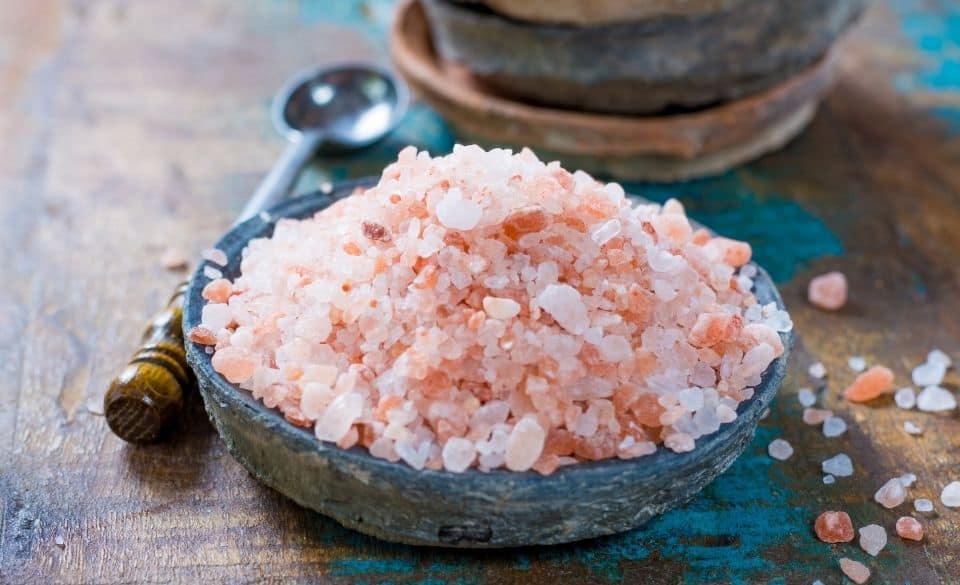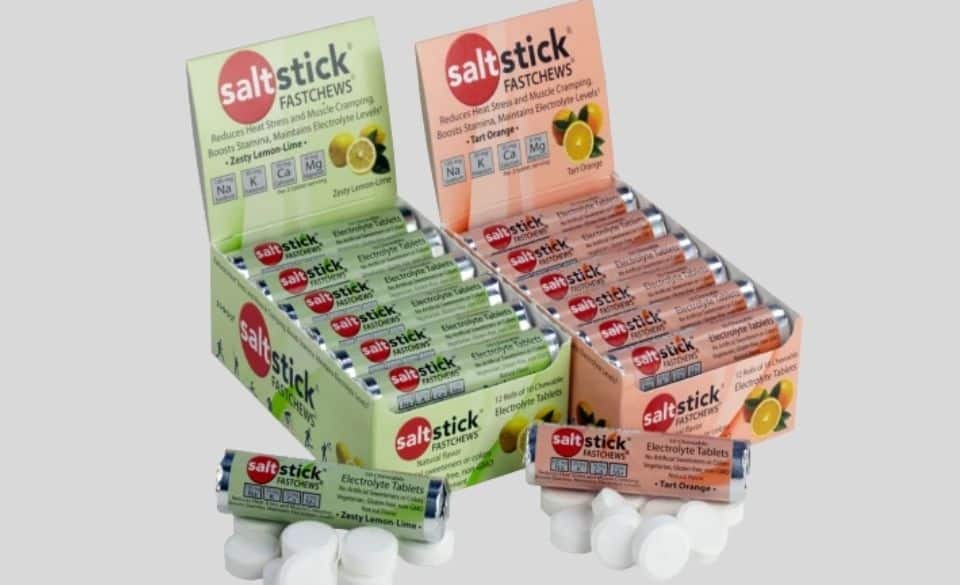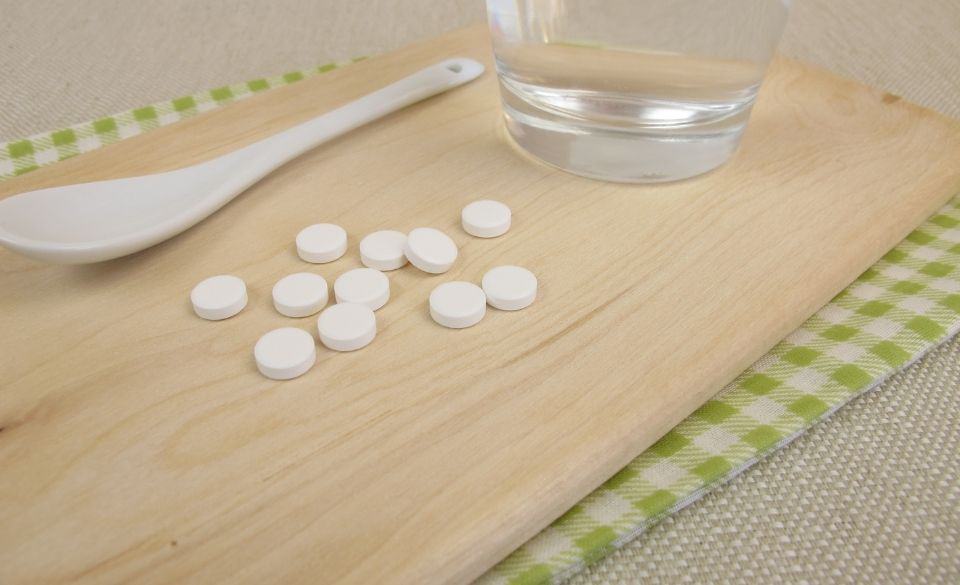
Himalayan Salt For Runners – A Complete Guide To Salt Pills For Running
Page Contents
As a runner, you often lose electrolytes from sweat during a run, which includes salt (sodium). It is an important electrolyte that is needed to help regulate fluid in the blood and cells. If your sodium levels drop too much you can end up retaining excess fluid, which can be dangerous, to say the least. So, does this mean we should take excess salt before or during a run? In this article, we look at how salt can benefit runners and why Himalayan salt for runners is a better choice than table salt.
Himalayan Salt For Runners – A Complete Guide
Himalayan salt is found everywhere, from grocery stores to specialty food stores and health shops. The reason it’s so popular is that it contains more than 80 minerals and elements. The shades of pink, red, and white indicate just how many minerals and how much iron content is in it. But how does it differ from regular table salt?
The main difference between the two is the amount of processing that is involved. Your normal table salt goes through numerous high heat processes that strip away beneficial minerals, leaving only sodium and chloride. Himalayan salt, on the other hand, is created by the evaporation of seawater. This makes it much more natural than the chemically cleaned and bleached table salt.
Because of the natural process, Himalayan salt for runners is highly recommended over the normal table salt. It can not only help promote a stable pH balance within the cells but can also help support healthy lungs and respiratory function.
Other benefits of Himalayan salt for runners, is that it helps to prevent muscle cramps, increases hydration, and improves circulation. These are all beneficial to not only the runner but triathlete and cyclist too.
Since Himalayan salt offers a range of minerals it helps to bring out the sweetness and flavours when added to food. It’s a great addition to your diet if you are training a lot. Because as a runner we often crave salty foods and our body is constantly seeking minerals that are often not found in processed foods.

Why Do Runners Eat Salt?
If you have ever witnessed a marathon from the side-line, you often see runners taking in salt tablets or similar products. But why do runners eat salt?
The lack of salt (sodium) often triggers cramping during intense training or hot weather conditions. Even if you are not prone to sweating a lot, you may still need to increase your sodium intake.
Just look at the research Kris Osterberg, R.D., of the Gatorade Sports Science Institute in Illinois did. The study found that runners during a 5km race can lose up to 1300 mg of sodium. Runners that sweated less, still managed to lose 155 mg. So you can imagine the amount of sodium lost in a marathon or even an ultra-marathon event is much higher.
Even though the results point towards increasing sodium intake, it is essential not to go out and start doubling your sodium intake straight away. First, start by taking a sweat test. A sweat test can help you evaluate your sodium loss and tell you how much you need and under what conditions. You may find that you already take enough salts through your electrolyte drink, race nutrition, and diet. But if you don’t, a sweat test will provide the intake need during training and racing.
Another study done on thousands of athletes found that more than 20% of runners lose over 1,500mg of sodium per liter of sweat. So it just shows the importance of why runners should eat salt.

Best Salt Pills For Runners
Salt and health is often a relationship that is frowned upon, and often people are stared away from increasing salt in their diet. But for athletes, particularly runners, salt pills can be a blessing in disguise. So what are the best salt pills for runners?
There are many brands on the market, but one that stands out is SaltStick. Saltstick contains more than 430 mg of sodium in two capsules, making it one of the highest amounts of sodium available in the market.
Other brands like Elite Sportz Electrolyte Tablets, are highly rated by athletes and customers on Amazon. The electrolyte tablets contain 200mg of sodium per serving, and other electrolytes like potassium, magnesium, and calcium.
Depending on your sodium needs the best salt pills for runners are ones that can be adjusted to one’s needs. Often going for a smaller serving of sodium will allow you to refine the intake needed. But if you entering a longer event like an ultra-marathon or Ironman stick to the higher sodium content per serving.
How To Carry Salt Tablets On Run?
There are multiple ways to carry salt tablets on a run. Often runners wrap the tablets in foil and place them under their hat, or inside their running short pockets. Other runners even tuck them inside their socks, so there are many ways you can carry salt tablets on a run.
Before you stick them inside your shorts or underneath your socks, make sure you wrap them in either foil or plastic. This will stop them from dissolving from sweat during a run.
There is no right or wrong way to carry them on a run. So trial a few different area’s to see which is more comfortable and accessible for you.
If you are a long-distance runner, you may find you are already carrying a small bag. While this often works, many runners forget to take salt tablets regularly, hence why we recommend storing them somewhere for easy accessibility.

When To Take Salt Tablets Running?
It is important to take salt tablets when you are running in hot conditions or for long distances. If you are prone to sweating a lot, it is recommended to take salt tablets prior to running. Then adding to the dose each hour. If you have had a sweat test you will know the exact figure you will need to consume every hour and under what conditions.
If you haven’t done sweat test before and you find your clothes showing salty stains, you may need to increase your salt intake.
Remember that the drier the air is, the quicker the sweat will evaporate. This means that salt marks are often more visible in humid conditions. While this doesn’t give you an exact figure the average across many studies shows that the average runner loses around 950mg per liter.
So start by calculating your sweat lost through the amount of fluid you lose during exercise. You can do this by using an accurate set of scales to weigh yourself and a kitchen scale to weigh the water.
To Calculate Sweat Loss
1. First, start by urinating and then weighing yourself with no clothes on.
2. Perform your training session and record the volume of water you drank. 1 gram = 1 millilitre.
3. Once you have finished your session dry yourself and remove your clothes. Then weigh yourself again.
4. Subtract your weight from your pre-exercise weight. This will give you your weight loss volume during the training session.
Then you can calculate your sweat rate and divide the average sodium loss rate of 950mg/l (1 liter = 1000 gram). So if you lost 2000 grams during exercise it would give you 1900 mg of sodium that needs to be replaced. You can then divide this by the time you were out training, to give you an estimated hourly replenish rate.
This is a guideline based on recent studies of sodium lost in runners. You may need less or more sodium based on a sweat test.


Download Running the Mile for only 8usd
“A Know-all Short Report All About Long Distance Running”



